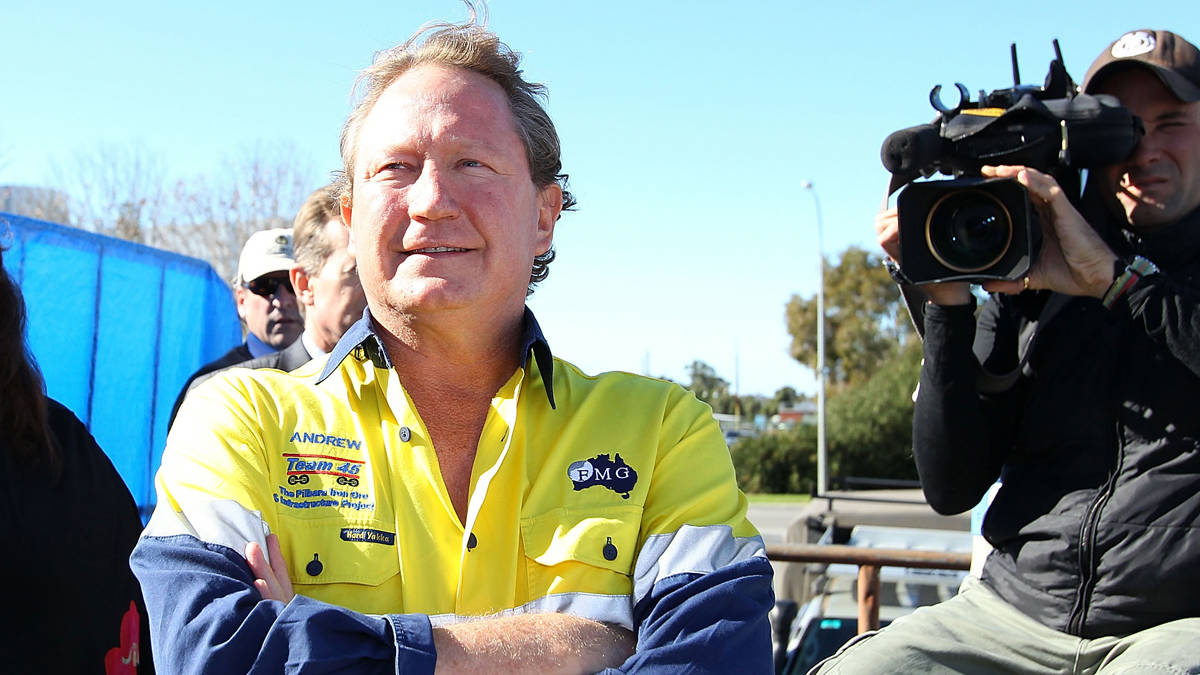ASX Green Energy Stocks: Twiggy to build $3bn renewable energy hub, breaks ground on electrolyser facility

Pic: Getty
- Twiggy’s Squadron Energy announces $3 billion renewable energy project in QLD
- FFI kicks off construction at new electrolyser facility in Gladstone, QLD
- Origin partners with Orica for hydrogen hub development in NSW
- Blackstone Minerals’ PFS delivers strong value for sustainable nickel
The energy division of Twiggy Forrest’s Tattarang – Squadron Energy, has unveiled a $3 billion renewable energy precinct in Central Queensland with contracts already issued for the immediate start of construction.
Under the plan, Forrest has acquired stage one and two of the Clarke Creek wind, solar and battery farm to create what has been described as “the largest renewable energy precinct in the southern hemisphere”.
With grid connection, long-term supply agreements and all necessary state and federal approvals for Clarke Creek in place, Squadron Energy will accelerate the start of construction with stage one anticipated to be fully operational in 2024.
Stage two could come online in 2026.
Bigger renewable energy projects in the pipeline
The project has the potential to produce enough wind, solar and battery energy to power more than 660,000 homes, equivalent to 40 per cent of Queensland households, and will export lower cost electricity directly into the National Electricity Market.
Dr Andrew Forrest AO said the deal was a landmark moment for Australia’s green energy future.
“We have commenced construction of what will be the largest renewable energy precinct in the southern hemisphere – but I am delighted to say that we will not hold this record for long, with other renewable energy projects under development that will surpass our project in scale.
“We intend to bring on other projects which will be larger than today’s record,” Dr Forrest said.
Forrest said Squadron is investing in Clarke Creek not only to harness the renewable power of the wind and sun to energise homes, factories, and cities, but as a critical step towards breaking reliance on fossil fuels.
“Climate change is the single greatest threat to our existence, and we must meet this global challenge with tenacity and speed.
“This announcement is a signal that Australia is prepared to act with purpose to realise our 100 per cent, green, renewable, zero-emissions energy future.”
Clarke Creek’s grid-scale generation capability will displace 2.7 million tonnes of carbon each year and has strong alignment with the Queensland government’s integrated energy plan for the state.
Construction begins at world-leading electrolyser facility
In a separate announcement over the weekend Forrest’s Fortescue Future Industries (FFI) announced the beginning of construction works at the Green Energy Manufacturing Centre (GEM) in Gladstone, Queensland.
The GEM will be powered by green energy and become a major new pollution free green manufacturing hub.
It will have an initial capacity of two gigawatts per annum – more than doubling current global production, and enough to produce more than 200,000 tonnes of green hydrogen each year.
Stage one is the A$114 million (US$83 million) electrolyser facility, which will be expanded as current demand indications crystallise.
FFI says the first electrolysers manufactured at the facility in early 2023 are earmarked to be used in Queensland at its proposed green hydrogen to ammonia project at Gibson Island.
Queensland Premier, Annastacia Palaszczuk said “As a result of this project and others like it, Gladstone will become a world leading hub for the manufacture of electrolysers – vital to the production of renewable hydrogen.
“The partnership we’ve forged with Twiggy and his team will create local jobs, support our economic recovery and create an advanced manufacturing industry in Gladstone that doesn’t exist anywhere else in the country,” she said.
Origin partners with Orica on Hunter Valley hydrogen hub
Signing a Memorandum of Understanding (MoU), mining services company Orica and Origin (ASX:ORG) will conduct a feasibility study into the viability of a green hydrogen production facility, or ‘Hunter Valley Hydrogen Hub’, and downstream value chain opportunities.
The $37 million project is designed to deliver up to 95 per cent abatement efficiency from unabated levels, reducing the site’s total greenhouse gas emissions by almost 50 per cent.
Other initiatives designed to improve the sites sustainability performance include the reduction of emissions from the prill tower of over 99 per cent, and switching the manufacturing facility to recycled water, an initiative that saves the Hunter region up to 2.9 billion litres of drinking water a year.
Blackstone’s PFS highlights ‘outstanding’ value for sustainable nickel
Under the pre-feasibility study (PFS), Blackstone Minerals’ (ASX:BSX) Ta Khoa Nickel Project (TKNP) in northern Vietnam will deliver a mining inventory of 64.5Mt at a grade of 0.41% nickel for 264,000t Nickel.
Its life of mine concentrate production is 1.9Mt at 8% nickel for 151,000t nickel – a 39% increase in nickel concentrate production compared to the scoping study base case.
BSX says the project has the potential to “transform Vietnam’s role in the movement towards electrification of transpiration” and will generate “significant socio-economic benefits”.
The economics of the Ta Khoa Project are underpinned by ~50% concentrate feed for the TKR being provided by the TKNP – with first concentrate production set for 2025 before ramping up to nameplate design of 8Mtpa in 2027.
Benchmark Minerals Intelligence estimates that the supply available for battery related nickel demand will enter a supply shortage from 2026.
“To equilibrate nickel supply and demand, Blackstone believes that nickel prices will stay at current levels to incentivise investment,” Blackstone Minerals said.
Related Topics
UNLOCK INSIGHTS
Discover the untold stories of emerging ASX stocks.
Daily news and expert analysis, it's free to subscribe.
By proceeding, you confirm you understand that we handle personal information in accordance with our Privacy Policy.








